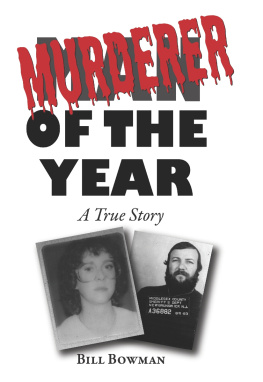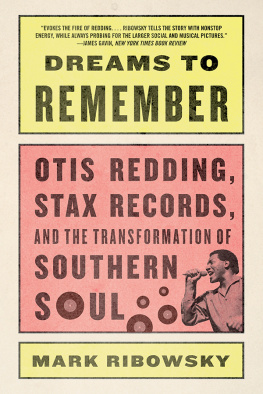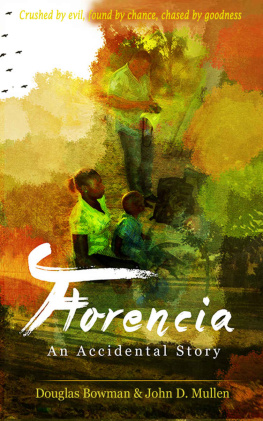Bowman Rob - Soulsville, U.S.A.: The Story of Stax Records
Here you can read online Bowman Rob - Soulsville, U.S.A.: The Story of Stax Records full text of the book (entire story) in english for free. Download pdf and epub, get meaning, cover and reviews about this ebook. year: 2010, publisher: Music Sales, genre: Non-fiction. Description of the work, (preface) as well as reviews are available. Best literature library LitArk.com created for fans of good reading and offers a wide selection of genres:
Romance novel
Science fiction
Adventure
Detective
Science
History
Home and family
Prose
Art
Politics
Computer
Non-fiction
Religion
Business
Children
Humor
Choose a favorite category and find really read worthwhile books. Enjoy immersion in the world of imagination, feel the emotions of the characters or learn something new for yourself, make an fascinating discovery.

- Book:Soulsville, U.S.A.: The Story of Stax Records
- Author:
- Publisher:Music Sales
- Genre:
- Year:2010
- Rating:5 / 5
- Favourites:Add to favourites
- Your mark:
- 100
- 1
- 2
- 3
- 4
- 5
Soulsville, U.S.A.: The Story of Stax Records: summary, description and annotation
We offer to read an annotation, description, summary or preface (depends on what the author of the book "Soulsville, U.S.A.: The Story of Stax Records" wrote himself). If you haven't found the necessary information about the book — write in the comments, we will try to find it.
Bowman Rob: author's other books
Who wrote Soulsville, U.S.A.: The Story of Stax Records? Find out the surname, the name of the author of the book and a list of all author's works by series.
Soulsville, U.S.A.: The Story of Stax Records — read online for free the complete book (whole text) full work
Below is the text of the book, divided by pages. System saving the place of the last page read, allows you to conveniently read the book "Soulsville, U.S.A.: The Story of Stax Records" online for free, without having to search again every time where you left off. Put a bookmark, and you can go to the page where you finished reading at any time.
Font size:
Interval:
Bookmark:
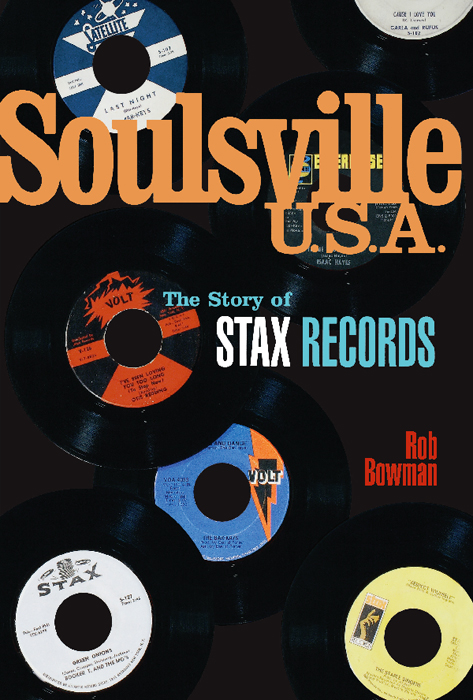
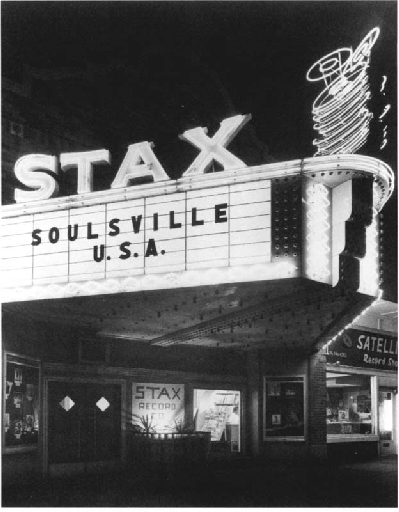
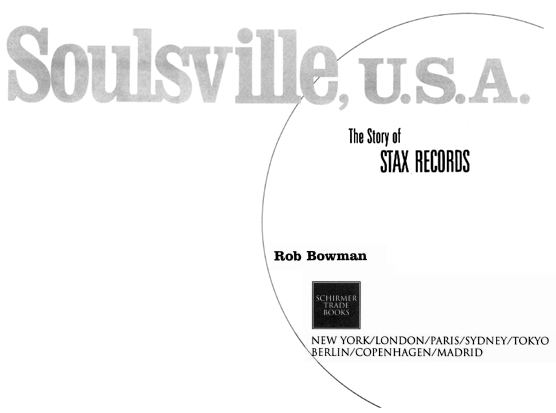
Copyright 1997 Rob Bowman
This edition 2010 Schirmer Trade
(A Division of Music Sales Limited, 14-15 Berners Street, London W1T 3LJ)
ISBN: 978-0-85712-499-9
Design by Brady McNamara
Set in 9/11 Simoncini Garamond
The Author hereby asserts his / her right to be identified as the author of this work in accordance with Sections 77 to 78 of the Copyright, Designs and Patents Act 1988.
All rights reserved. No part of this book may be reproduced in any form or by any electronic or mechanical means, including information storage and retrieval systems, without permission in writing from the publisher, except by a reviewer who may quote brief passages.
Every effort has been made to trace the copyright holders of the photographs in this book, but one or two were unreachable. We would be grateful if the photographers concerned would contact us.
A catalogue record of this book is available from the British Library.
For all your musical needs including instruments, sheet music and accessories, visit www.musicroom.com
For on-demand sheet music straight to your home printer, visit www.sheetmusicdirect.com
In Memoriam
To those who gave me interviews and have since passed on:
Dave Clark
Dick Cane Cole
Willie Gordon
Monk Higgins
R. B. Hudmon
Allen Jones
Major Lance
O. B. McClinton
Dave Prater
W hen I first began researching the story of Stax Records in the summer of 1985, little did I know that 12 years later I would still be working at bringing this project to a conclusion. My initial motivation was simple. Although born and bred in Toronto, I had long been intoxicated by the music, black and white, of the Southern United States. Consequently, when it came time to do my Ph.D. in ethnomusicology, I enrolled at the University of Memphis. I chose a Southern school because I wanted to live within the culture that had produced wave upon wave, genre upon genre of the most exciting music I had ever known. It seemed obvious to me that I might just get that much closer to grokking the essence of this music if I actually lived within the culture that had produced it. It was the best decision I have ever made.
For those who have never lived in Memphis, let me state emphatically that it is a very odd city. Lying at the heart of the mid-South, everything moves at a much slower pace in Memphis than I was certainly used to. To make any headway at all, I had to learn to gear down. It is also a city where some of the rawest, most exciting music humans have ever created might be heard on any given weekend night. But, just as likely, nothing will be happening. The great musical moments in Memphis happen infrequently and, especially in the case of black Memphis, are often not publicized outside of a small sector of the community. Tourists rarely see any of it. Most locals are totally oblivious to either its existence or its magic.
All of this is a long way of saying that if I hadnt lived in Memphis, this book could never have been written. In fact, it never would have been written because I had never planned to devote a decade of my life to Stax Records. Stax was only one of several topics that fascinated me. What led me ultimately down the long winding path that has culminated in this book was a growing disgust I had with the fact that most Memphians seemed blissfully unaware of the importance of the legacy of Stax Records. While most people at least had some vague notion that it had existed, very few had any sense of the impact the records produced by Stax had on the popular music of the last 35 years, and just as few realized the importance this company had for the local African-American populace.
While I found this lack of knowledge and interest particularly galling in Memphis itself, the general neglect of Stax extended well beyond the Memphis city limits. At the time that I began this project, there were eight books out on Motown, but not a single volume had been written about Stax. Having worked my way into the local music community, I had already met a number of the people who had worked at Stax. Hence, I decided that I was the right person in the right place to do something about this injustice. I set out to document with as much richness, dignity, and grace as I could muster the story of those that had created the mighty Stax Records.
And so began an incredible journey. In the intervening dozen years, my Stax activities have included: innumerable lectures; academic and popular press articles on various Stax artists; a four-part radio special; over 65 compact disc reissues of Stax material; and a film. In some respects, Stax had become a full-time job, dominating a significant number of my waking hours. I conducted over 200 interviews with those who in one way or another were involved with Stax, including virtually every artist, songwriter, session musician, engineer, and producer as well as all three owners and several of the key office personnel. These interviews have taken me into a wide variety of milieus, ranging from roach-infested homes, reflecting the most abject poverty you could imagine, to mansions in the East Hamptons. The former was the site for a fascinating interview with one of the members of one of the great vocal groups at Stax; the latter was where I interviewed Atlantic Records co-owner Jerry Wexler, whose company distributed Stax. The two interviews were conducted within days of each other and provided a perfect insight as to who makes money in the music industry and who does not!
In the process of doing all of these interviews, I was graciously allowed into the lives of dozens of people, many of whom remain friends of mine to this day. My life has been that much richer for all these experiences. I consider myself blessed. Much of this book is derived from those interviews, and as often as possible I have tried to tell the story of Stax in the words of those that lived it.
Working on a project over this length of time has impressed upon me the urgency of conducting historical research earlier rather than later. Nine people that I interviewed for this book have passed away. Another five passed away before I found the time to talk to them and, of course, a very few such as Otis Redding and Al Jackson had passed away while the story was still unfolding. I have also become aware of a significant erosion in the memories of many of the people whom I have interviewed more than once. Details that in 1985 or 1986 came readily had all but vanished by 1996. Thank God for Maxell tape!
When I first began writing the history of Stax, I thought I was writing about a bunch of records that I loved. I quickly realized the story was much richer than that. As an integrated company in Memphis, Tennessee, in the 1960s, Stax was a political and/social phenomenon. As its ownership passed from being white to half-white/half-black to 100 percent black, Stax also became important as an innovative black business enterprise. The tale of its gradual unraveling at the hands of the United States government, CBS Records, and Memphiss Union Planters National Bank begged to be told.
Throughout its two very distinctive periods, Stax was a very special place to work. In the 1960s there was clearly the feeling of a Stax family. In the 1970s, as the company grew to include over 200 employees, the nature of that family changed, but for those who still toiled away at the McLemore Studio the family feeling remained. Most of those who were lucky enough to be a part of the company in either period describe their time at Stax as the best years of their lives. Several people got positively teary-eyed during the course of our interviews as they recalled the joy and occasionally the heartbreak of their time at Stax.
Font size:
Interval:
Bookmark:
Similar books «Soulsville, U.S.A.: The Story of Stax Records»
Look at similar books to Soulsville, U.S.A.: The Story of Stax Records. We have selected literature similar in name and meaning in the hope of providing readers with more options to find new, interesting, not yet read works.
Discussion, reviews of the book Soulsville, U.S.A.: The Story of Stax Records and just readers' own opinions. Leave your comments, write what you think about the work, its meaning or the main characters. Specify what exactly you liked and what you didn't like, and why you think so.



